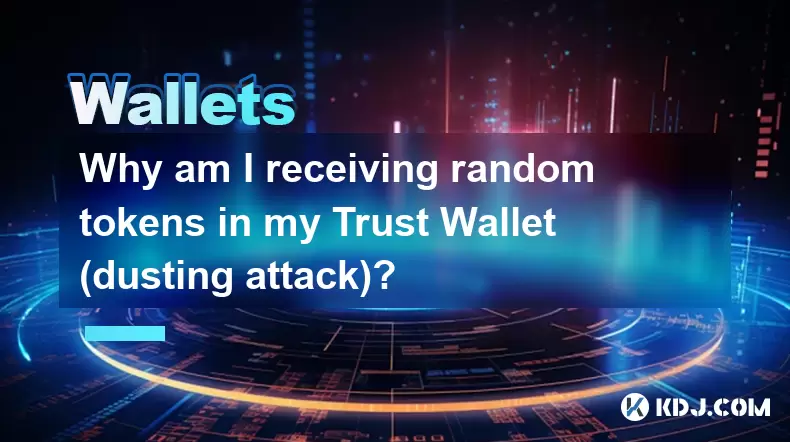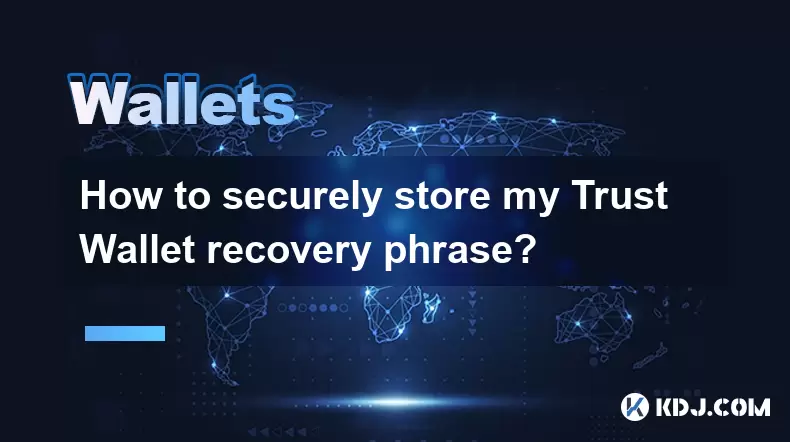-
 Bitcoin
Bitcoin $114200
0.00% -
 Ethereum
Ethereum $3637
0.56% -
 XRP
XRP $2.950
-2.01% -
 Tether USDt
Tether USDt $0.9999
0.02% -
 BNB
BNB $761.0
0.55% -
 Solana
Solana $164.1
-1.38% -
 USDC
USDC $0.9999
0.02% -
 TRON
TRON $0.3332
0.36% -
 Dogecoin
Dogecoin $0.2012
-0.52% -
 Cardano
Cardano $0.7261
-1.41% -
 Hyperliquid
Hyperliquid $37.62
-2.13% -
 Stellar
Stellar $0.3930
-2.65% -
 Sui
Sui $3.441
-0.16% -
 Bitcoin Cash
Bitcoin Cash $563.8
0.70% -
 Chainlink
Chainlink $16.50
0.09% -
 Hedera
Hedera $0.2424
-0.14% -
 Ethena USDe
Ethena USDe $1.001
0.01% -
 Avalanche
Avalanche $22.20
0.00% -
 Litecoin
Litecoin $118.0
-2.48% -
 UNUS SED LEO
UNUS SED LEO $8.991
0.12% -
 Toncoin
Toncoin $3.195
-3.87% -
 Shiba Inu
Shiba Inu $0.00001217
0.12% -
 Uniswap
Uniswap $9.674
-0.21% -
 Polkadot
Polkadot $3.633
1.00% -
 Monero
Monero $295.3
-0.82% -
 Dai
Dai $0.9999
0.00% -
 Bitget Token
Bitget Token $4.321
-0.41% -
 Cronos
Cronos $0.1392
0.73% -
 Pepe
Pepe $0.00001027
-0.89% -
 Aave
Aave $258.5
0.32%
Why am I receiving random tokens in my Trust Wallet (dusting attack)?
A dusting attack involves sending tiny crypto amounts to track wallet activity and potentially link identities to addresses—common in Trust Wallet but not directly harmful if uninteracted with.
Aug 06, 2025 at 10:57 am

What Is a Dusting Attack in the Cryptocurrency Space?
A dusting attack occurs when malicious actors send minuscule amounts of cryptocurrency—often fractions of a token—to thousands or even millions of wallet addresses. These tiny transfers, known as "dust," are not meant to fund your wallet but to track your transaction behavior. The attackers aim to link your wallet address to your identity by monitoring how you interact with these dust tokens. In the context of Trust Wallet, users may notice unfamiliar tokens appearing in their wallet with zero utility or value. These are typically signs of a dusting attempt. The term "dust" refers to amounts so small they are nearly worthless, yet they can be used for surveillance when combined with blockchain analysis tools.
How Do Dusting Attacks Work on Trust Wallet?
Trust Wallet, being a non-custodial wallet, gives users full control over their private keys and on-chain activity. However, this also means every transaction is publicly visible on the blockchain. Attackers exploit this transparency. They distribute fractions of low-value tokens across numerous wallet addresses, including yours. Once the dust is sent, the attacker uses blockchain explorers and clustering algorithms to observe how the wallet handles these tokens. For example, if you transfer, swap, or consolidate funds after receiving the dust, the attacker may correlate those actions with other addresses, potentially uncovering your real-world identity. Some dusting attacks involve malicious tokens that, when viewed or interacted with, could trigger phishing scripts if the wallet interface is compromised—though Trust Wallet has safeguards against this.
Why Are Random Tokens Appearing in My Trust Wallet?
The random tokens you see are likely the result of a dusting campaign targeting multiple wallets simultaneously. These tokens often come from obscure or newly created projects and may have names resembling legitimate cryptocurrencies. The primary goal is not to steal funds directly but to map wallet activity. When a token appears in your Trust Wallet that you did not request or purchase, check its contract address on a blockchain explorer like BscScan or Etherscan. You may notice:
- The token has zero or negligible value
- It was recently deployed by an unknown entity
- Thousands of wallets received the same token
These are strong indicators of a dusting attack. Trust Wallet automatically detects and displays all tokens associated with your address, even if you didn’t approve them. This visibility does not mean your funds are at risk, but it does expose you to tracking attempts.How to Protect Your Privacy After Receiving Dust Tokens
If you’ve received random tokens, immediate action can help preserve your anonymity: - Do not interact with the suspicious token—avoid sending, swapping, or approving it, as this could reveal your private activity.
- Use Trust Wallet’s token hiding feature: Long press the suspicious token in your asset list, select “Hide,” and confirm. This removes it from view without affecting your balance.
- Enable anti-phishing measures in Trust Wallet settings to prevent malicious pop-ups.
- Consider using different wallet addresses for separate activities (e.g., one for trading, another for staking) to limit exposure.
- Avoid connecting your wallet to untrusted websites or dApps that may log your address and transaction patterns.
Can Dusting Attacks Compromise My Private Keys?
No, a dusting attack cannot access your private keys or directly withdraw funds from your Trust Wallet. The attack is purely informational, relying on blockchain analysis rather than hacking. Your private keys remain secure as long as you do not share them or connect your wallet to fraudulent platforms. However, the real danger lies in metadata exposure. If an attacker successfully links your wallet to your identity—through transaction patterns, exchange withdrawals, or linked accounts—they could target you with social engineering attacks, blackmail, or phishing attempts. The security of your funds depends on maintaining operational security, not just cryptographic protection.Steps to Audit and Secure Your Trust Wallet Post-Dusting
To ensure your wallet remains secure after a dusting incident: - Open Trust Wallet and go to the "Settings" menu.
- Tap on "Wallets" and select the affected wallet address.
- Review the list of displayed tokens and identify any unfamiliar ones.
- For each suspicious token, tap and hold, then choose "Hide" to remove it from view.
- Visit a blockchain explorer and input your wallet address to analyze incoming transactions.
- Look for multiple small transfers from the same contract or sender address.
- Add the malicious contract address to your personal blocklist, avoiding future interactions.
- Avoid using the same wallet for high-profile activities if anonymity is a priority.
Frequently Asked Questions
Can I delete the dust tokens from my wallet entirely?
You cannot delete tokens from the blockchain—they remain part of the public ledger. However, you can hide them in Trust Wallet to remove them from your visible asset list. Go to your wallet, long-press the token, and select “Hide.” The token will no longer appear, though it still exists on-chain.Is it safe to keep using my Trust Wallet after a dusting attack?
Yes, it is safe. A dusting attack does not compromise your private keys or funds. As long as you do not interact with the malicious tokens and avoid sharing your wallet address unnecessarily, your wallet remains secure. Continue using strong security practices like enabling biometric locks and avoiding suspicious dApps.How do attackers benefit from sending free tokens?
Attackers do not aim to benefit from the tokens themselves. The value lies in data collection. By observing how wallets react to dust, they can de-anonymize users, especially those managing large holdings or engaging in private transactions. This information may be sold to third parties or used for targeted scams.Can I report a dusting attack to Trust Wallet support?
Trust Wallet does not remove tokens from the blockchain, as it is a decentralized wallet. However, you can report the malicious token contract to Trust Wallet’s official channels or blockchain security platforms like CertiK or SlowMist. Reporting helps warn other users and may lead to blacklisting the token in future wallet updates.
Disclaimer:info@kdj.com
The information provided is not trading advice. kdj.com does not assume any responsibility for any investments made based on the information provided in this article. Cryptocurrencies are highly volatile and it is highly recommended that you invest with caution after thorough research!
If you believe that the content used on this website infringes your copyright, please contact us immediately (info@kdj.com) and we will delete it promptly.
- EIP-7999: Ethereum's Fee Fixer-Upper – Is This the End of Gas Fee Nightmares?
- 2025-08-06 15:10:22
- Ethereum Withdrawals, Institutional Confidence, and a Potential Price Rally: Decoding the Signals
- 2025-08-06 15:30:12
- Ethereum Reform: EIP-7999 and the Quest for Fee-less Crypto?
- 2025-08-06 15:30:12
- XRP, MAGACOIN FINANCE, and Ethereum: What's Hot in the Crypto World?
- 2025-08-06 15:35:12
- Unilabs, Ethereum, and Dogecoin: Navigating the Crypto Landscape
- 2025-08-06 15:35:12
- ETH, BTC, XRP: Navigating Crypto Volatility and Spotting the Next Big Thing
- 2025-08-06 15:40:11
Related knowledge

How to add TRC20 token to Trust Wallet?
Aug 04,2025 at 11:35am
Understanding TRC20 and Trust Wallet CompatibilityTrust Wallet is a widely used cryptocurrency wallet that supports multiple blockchain networks, incl...

How to securely store my Trust Wallet recovery phrase?
Aug 06,2025 at 07:14am
Understanding the Importance of Your Trust Wallet Recovery PhraseYour Trust Wallet recovery phrase, also known as a seed phrase or mnemonic phrase, is...

Why am I receiving random tokens in my Trust Wallet (dusting attack)?
Aug 06,2025 at 10:57am
What Is a Dusting Attack in the Cryptocurrency Space?A dusting attack occurs when malicious actors send minuscule amounts of cryptocurrency—often frac...

What is a watch-only wallet in Trust Wallet?
Aug 02,2025 at 03:36am
Understanding the Concept of a Watch-Only WalletA watch-only wallet in Trust Wallet allows users to monitor a cryptocurrency address without having ac...

Why can't I connect my Trust Wallet to a DApp?
Aug 04,2025 at 12:00pm
Understanding DApp Connectivity and Trust WalletConnecting your Trust Wallet to a decentralized application (DApp) is a common process in the cryptocu...

How to fix a stuck pending transaction in Trust Wallet?
Aug 03,2025 at 06:14am
Understanding Why Transactions Get Stuck in Trust WalletWhen using Trust Wallet, users may occasionally encounter a pending transaction that appears t...

How to add TRC20 token to Trust Wallet?
Aug 04,2025 at 11:35am
Understanding TRC20 and Trust Wallet CompatibilityTrust Wallet is a widely used cryptocurrency wallet that supports multiple blockchain networks, incl...

How to securely store my Trust Wallet recovery phrase?
Aug 06,2025 at 07:14am
Understanding the Importance of Your Trust Wallet Recovery PhraseYour Trust Wallet recovery phrase, also known as a seed phrase or mnemonic phrase, is...

Why am I receiving random tokens in my Trust Wallet (dusting attack)?
Aug 06,2025 at 10:57am
What Is a Dusting Attack in the Cryptocurrency Space?A dusting attack occurs when malicious actors send minuscule amounts of cryptocurrency—often frac...

What is a watch-only wallet in Trust Wallet?
Aug 02,2025 at 03:36am
Understanding the Concept of a Watch-Only WalletA watch-only wallet in Trust Wallet allows users to monitor a cryptocurrency address without having ac...

Why can't I connect my Trust Wallet to a DApp?
Aug 04,2025 at 12:00pm
Understanding DApp Connectivity and Trust WalletConnecting your Trust Wallet to a decentralized application (DApp) is a common process in the cryptocu...

How to fix a stuck pending transaction in Trust Wallet?
Aug 03,2025 at 06:14am
Understanding Why Transactions Get Stuck in Trust WalletWhen using Trust Wallet, users may occasionally encounter a pending transaction that appears t...
See all articles

























































































